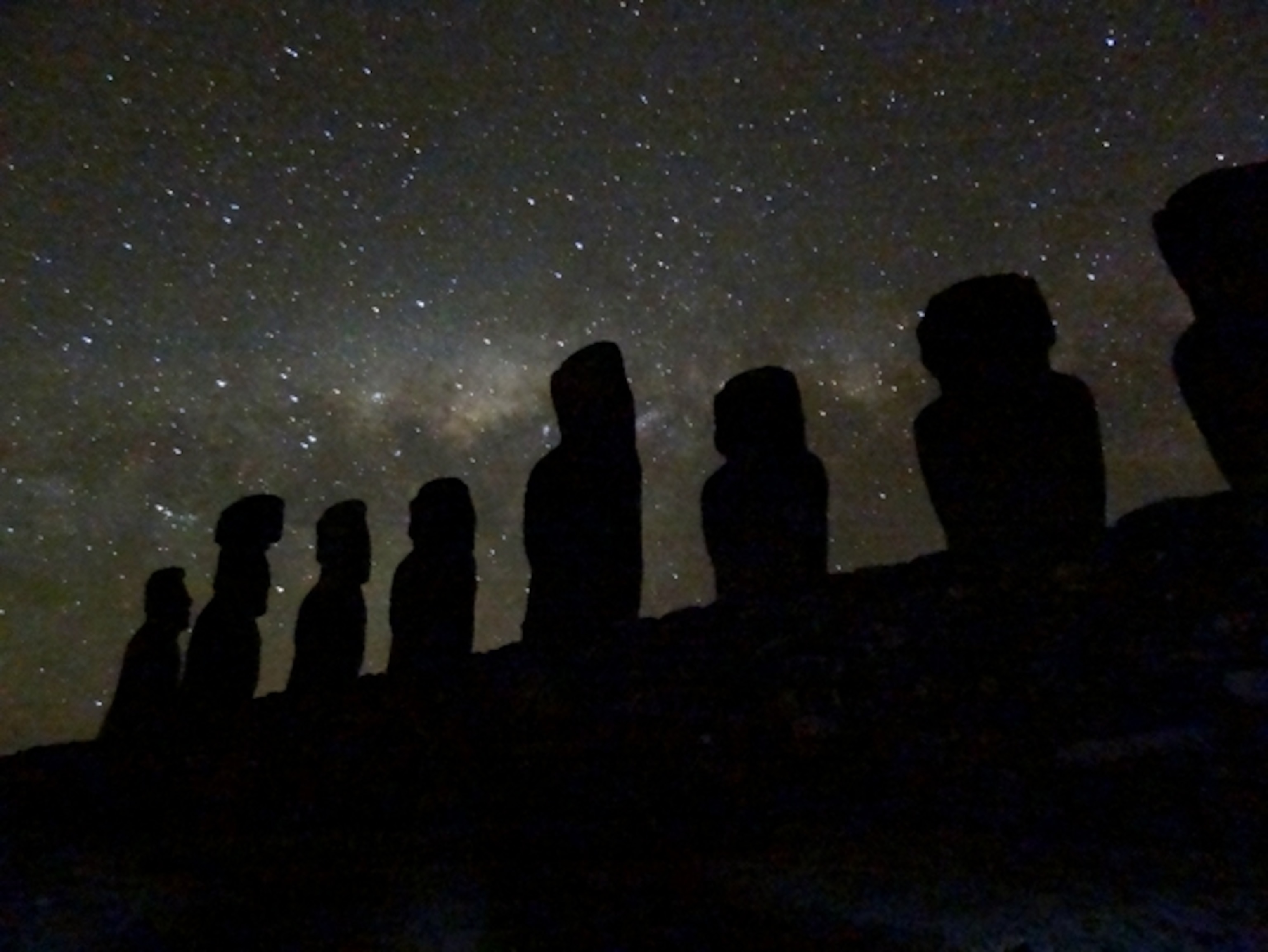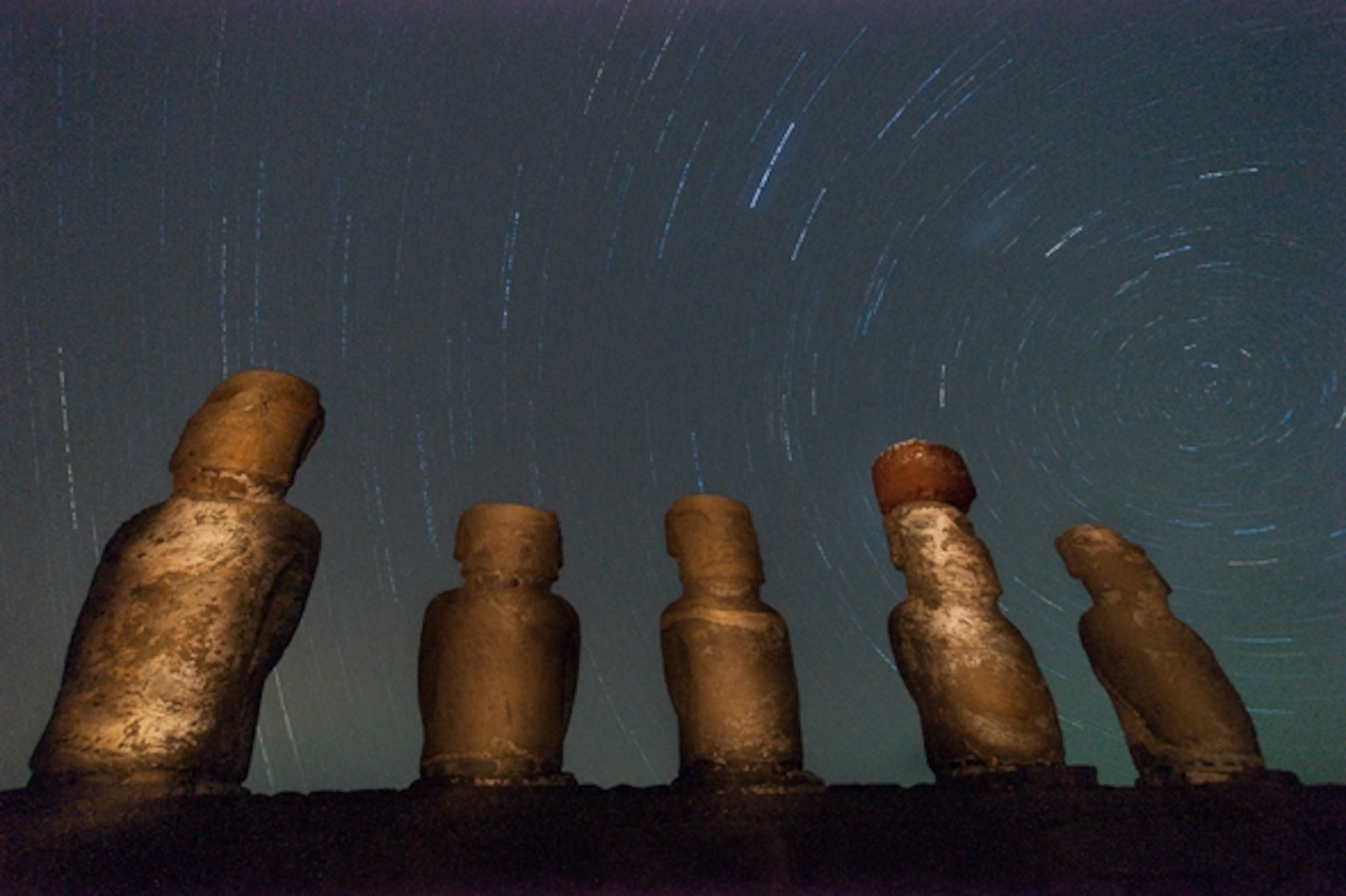
How to Shoot the Milky Way…On Easter Island
A little over a week ago, I left National Geographic’s headquarters in Washington, D.C. on the Society’s Around the World by Private Jet expedition. Before I took off, my good friends at Intelligent Travel asked a favor: As an amateur photographer (at best), would I test Nat Geo photographer Jim Richardson’s purportedly can’t-miss formula for shooting the Milky Way?
After all, I would be visiting the world’s most remote inhabited island — Rapa Nui, a.k.a. Easter Island — so light pollution wouldn’t be an issue. Plus, it seemed like a fitting tribute to the Polynesian wayfarers who used the stars to get there in the first place.
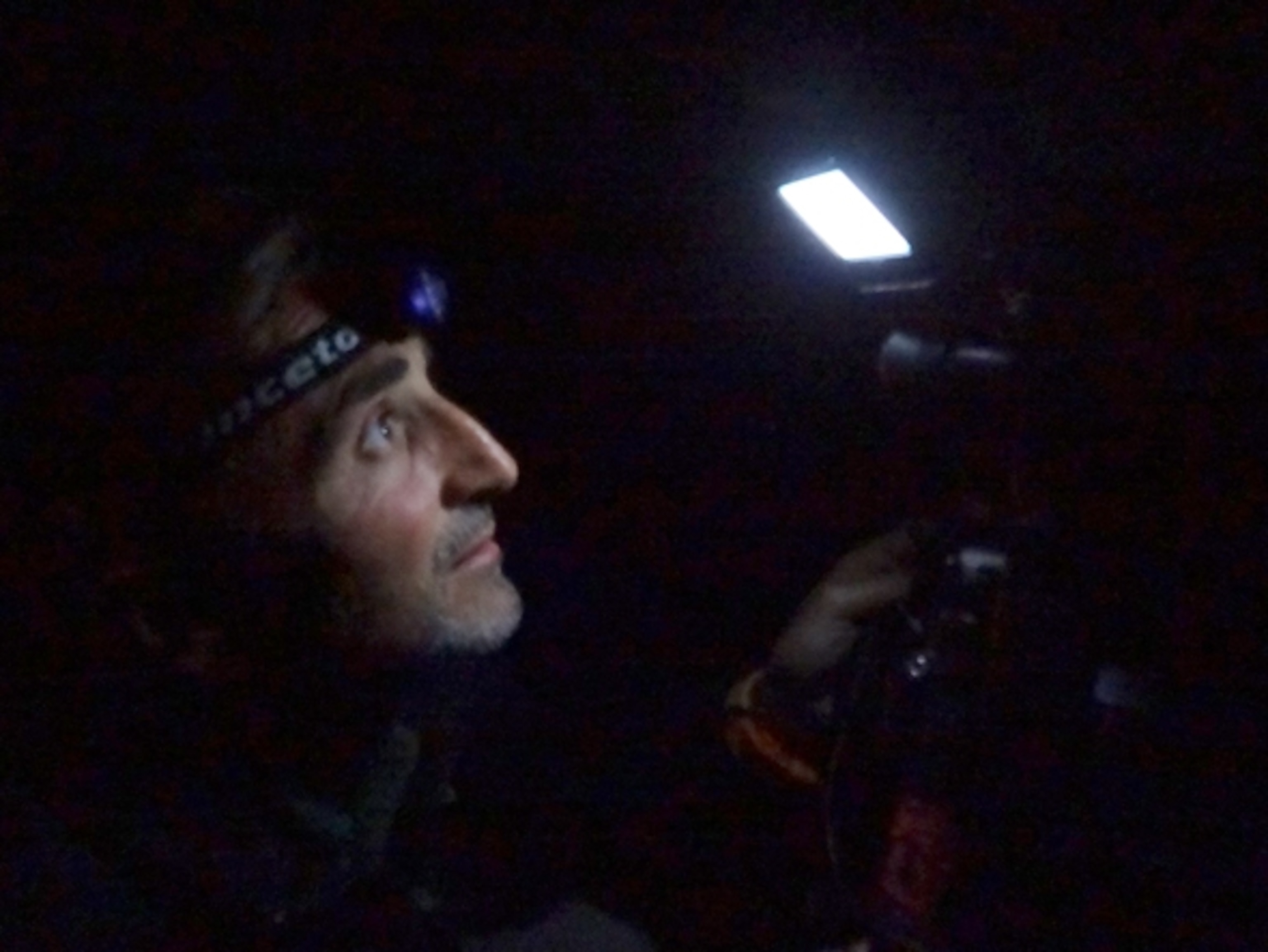
And so on a piercingly clear Pacific night (after a cocktail reception, a traditional dance performance, a briefing from archaeological experts, and a fabulous dinner) I found myself lumbering down the road from the island’s main town of Hanga Roa to Ahu Tangariki, the raised platform where 15 of the island’s iconic moai can be found. The site’s a magnet for photographers and filmmakers and, whether you know it or not, you’ve almost certainly seen it before.
About ten of my fellow travelers came along, as did National Geographic photographer Massimo Bassano who planned to coach us and get in a few shots of his own.
With Jim Richardson’s recipe for capturing the Milky Way — ISO 6400 at F2.8 for 60 seconds — in hand, I got out my small-but-mighty point and shoot and pocket-sized bendable tripod, earning a few raised eyebrows from my DSLR-toting colleagues.
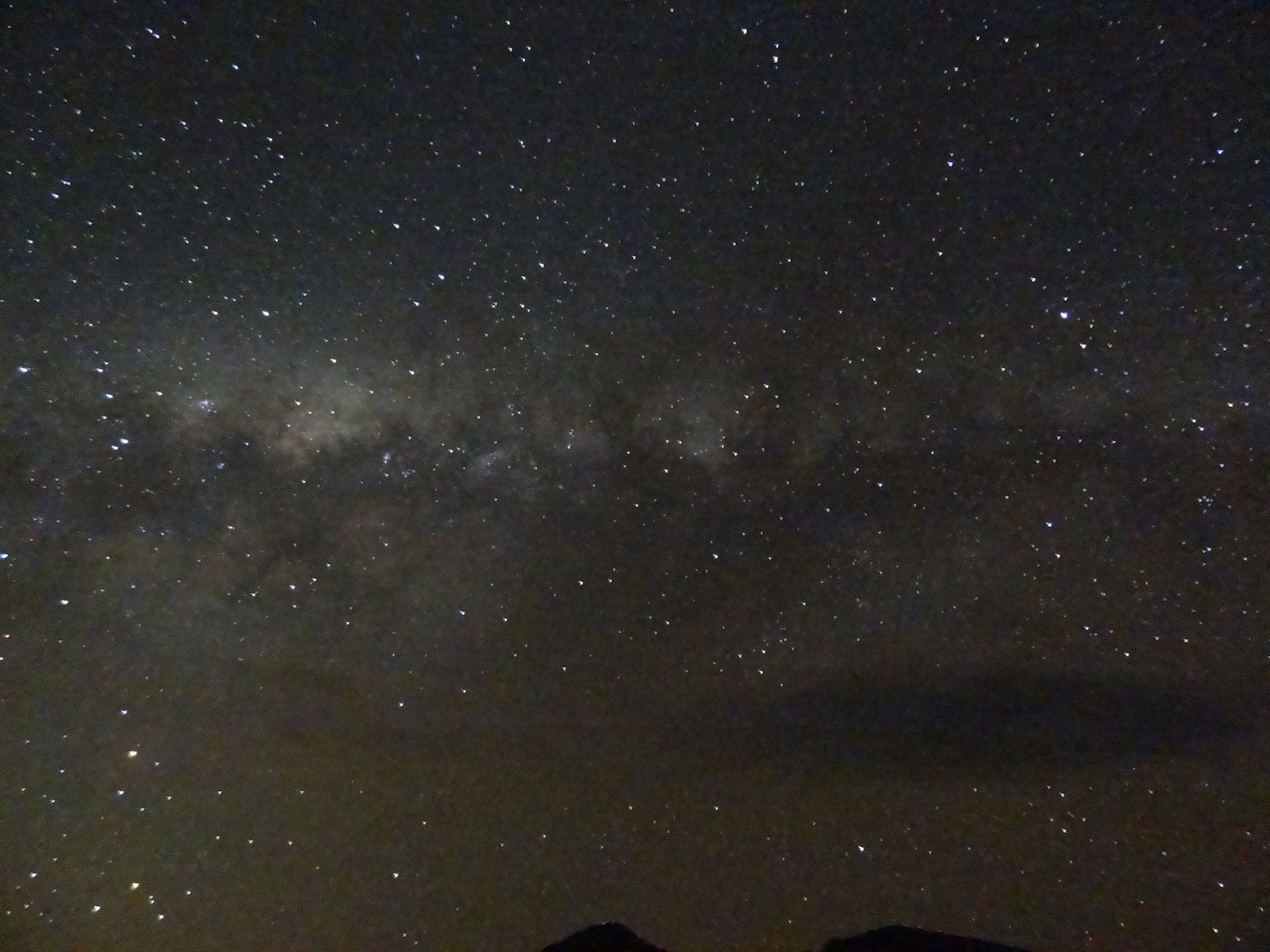
My camera’s aperture bottoms out at F3.3, the exposure timer at 30 seconds, and the ISO at 3200, but I figured that if this was the closest I could get to Jim’s magic formula, I should at least give it a try.
The result blew me away. Did I really take this photo with my tiny camera?
Others had similar success. We gawked at each other’s photos, shared high-fives, then took a few more to home in on a more perfect outcome.
Once we got the hang of that, we hiked to a spot that put the row of moai between us and the Milky Way and planted our tripods. This yielded a view of the heavens that must have been familiar to the people who carved these statues: stoic monoliths silhouetted against a celestial quilt.
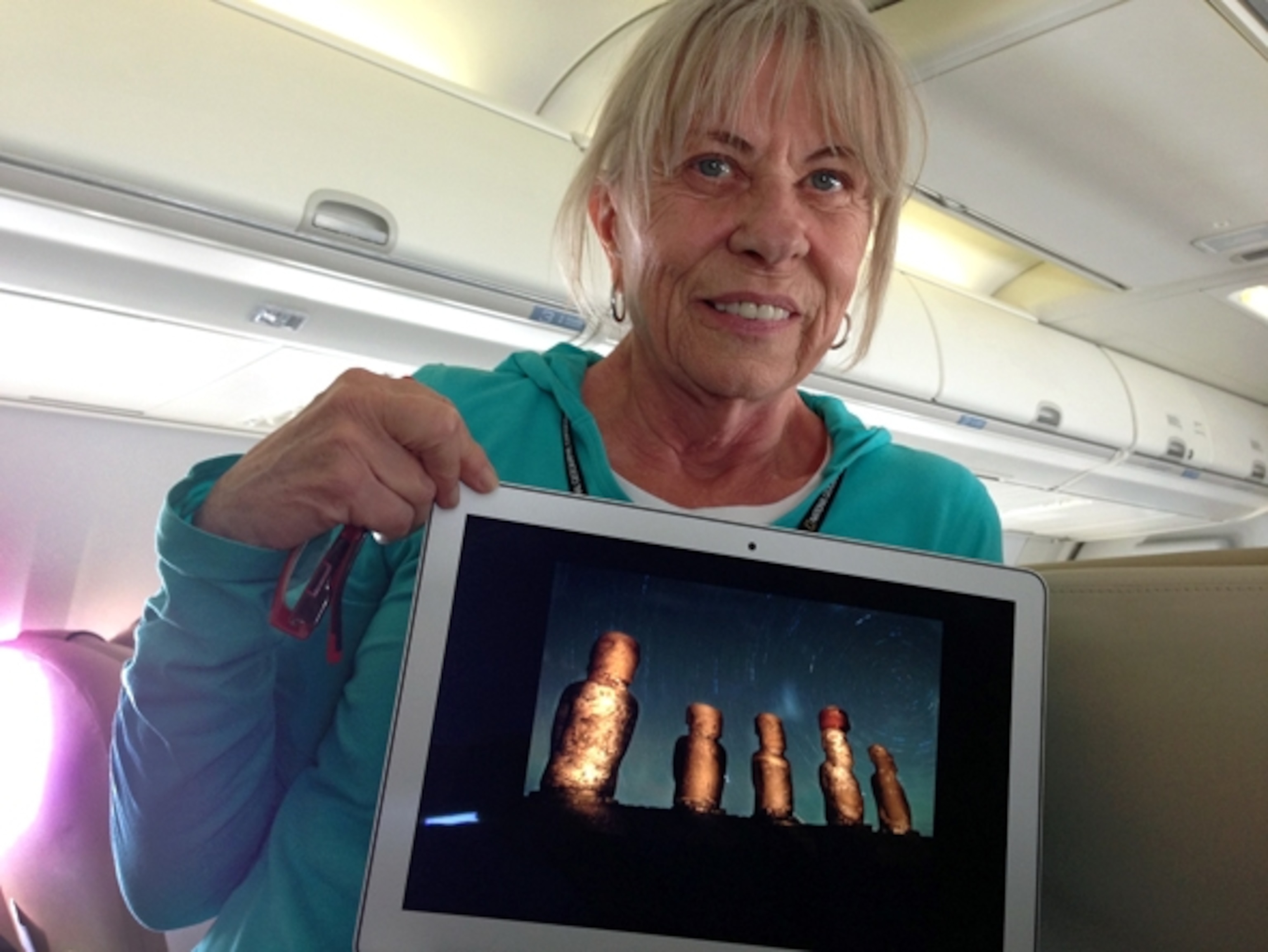
Our goal now was to capture the lit-up moai without losing the stars. This requires a long, long exposure, time enough for stars to trace spinning courses across the sky. Folks prepped their shots, then Massimo counted down: 3, 2, 1. Shutters opened. Someone ran from statue to statue, illuminating each from head to belly before extinguishing the light.
- National Geographic Expeditions
For 40 minutes we waited. Anthropologist and National Geographic Explorer-in-Residence Wade Davis stretched out on the ground and propped up his camera on a rock, settling in to tell stories about the Rapa Nui and his endless adventures in the field as the stars danced overhead. When Massimo announced that enough time had passed, shutters snapped shut.
Had it worked?
A sea of camera backs lit up the darkness as we inspected our results. And there stood the mighty moai, ancestors of those who built them, against a backdrop of whirling stars. It was a night to remember to be sure.
Something tells me I won’t be getting a call from National Geographic magazine’s photo editor with an assignment anytime soon, but still — not bad for an amateur with a basic point-and-shoot camera, right?
